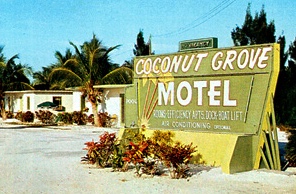
4900 Overseas Highway
Marathon, Florida
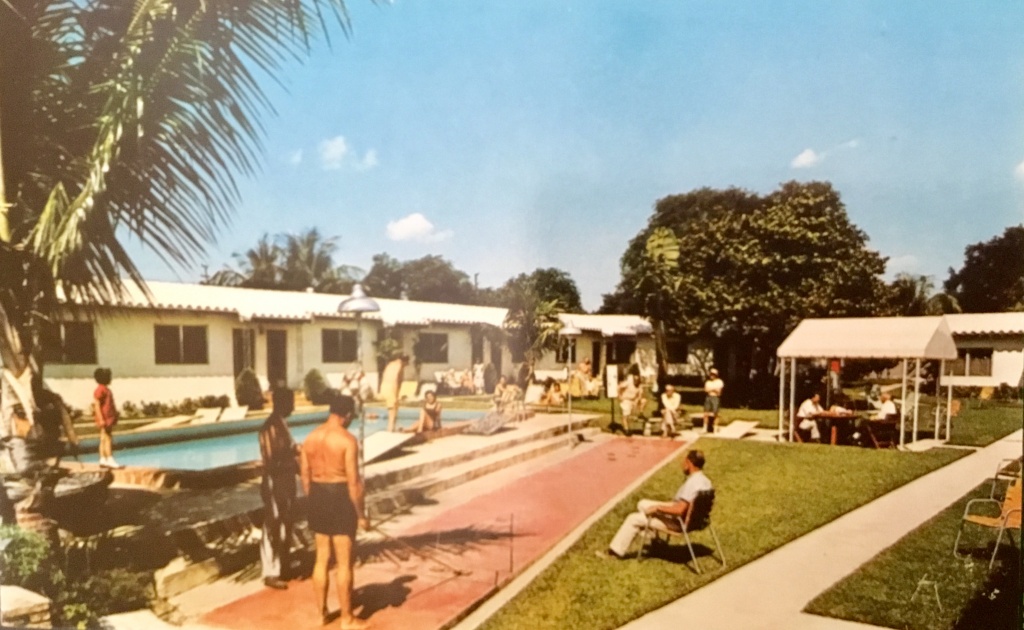
2669 South Bayshore Drive
Coconut Grove, Florida
American MOTELS, a hybrid word combining motor and hotel, were developed for people just like my Mother. She was cash poor but adventure rich. It wasn’t just driving from point A to point B with her at the wheel. She was seldom in a hurry. We stopped often, enjoyed the sites, read the billboards, ate native. I tried my first peach by the side of a Georgia road, shucked my first raw peanuts from the backseat of her Chevy Corvair. By 9 y/o I was pretty proficient at reading a road map.
The Coconut Grove Motel was located in Marathon in the Florida Keys, Mile Marker 50 on Florida Bay. 20 little individual cottages on a wooded hammock property with access to a shallow swimming beach. Nightly rates ranged from $25 to $35 depending on the season. If we were short on money, after a day at Higgs Beach in Key West we drove past it and got home late to our Little Havana apartment. Later the motel became the Crystal Bay Resort, and the cottages were modernized, amenities expanded offering a deeper marina. The motel property presently sits abandoned. It’s a sad scene with many of the cottages and trees destroyed due to Hurricane Irma. The concrete ping pong table still holding court among the weeds. It’s bizarre.
Coconut Grove also had a Mom & Pop motel, called the Dinner Key Lodge on 2669 South Bayshore Drive. Found right across from City Hall at the end of Pan American Way. It was one story, narrow U shaped, with 20 units, a pool in the middle, built in 1950. It was owned by a Philadelphia-transplant by the name of Saul Rosenberg. He also owned the 2 story Pine Terrace Motel next door, which he used for guests needing a longer stay, and also owned 8 apartment buildings along SW 27 Avenue. Saul was a hands-on proprietor and lived not too far away on Tigertail Avenue. Postcards from early motels sometimes divulged the owner or manager’s name, as a subtle sign the place was respectful and not a “hot pillow” establishment. But after WW2 these moral restraints were less apparent and the American Hotel Association backed away from addressing the “couples trade”. The north wing of the Dinner Key Lodge offered parking in the back; a front and back door for each room offering more privacy. The motel advertised having Air Conditioning, Heat, a Swimming Pool, and Shuffleboard. The use of the name Lodge defined the motel as catering to sportsmen. Proximity to Boating, Fishing and Sailing at Dinner Key Marina were mentioned in ads. In reality, many guests were businessmen, some working a trade show at the Dinner Key Auditorium across the street. In 1954 the City of Miami converted the old Pan American terminal building to City Hall, which also helped the motel’s visibility with visitors. Plenty of University of Miami students and family members stayed at the Lodge. The 1950s were boom times for Mom & Pop motels, and the industry matured with lengthy guides and films developed for entrepreneurs wishing to enter the hospitality business. A nationally respected expert was C. Vernon Kane, a certified accountant and professor at UM Business School who in 1954 wrote a guide titled Motor Courts: From Planning to Profits. Kane championed professionalism and espoused location as the most important factor to running a successful motel.
Dinner Key Lodge had the geography and for a quarter of a century witnessed much of Coconut Grove’s American-Graffiti youthful era. By 1950 Americans were spending twice as much on entertainment as they did on housing. Miami’s tourism volume grew and the industry prospered. I’m sure businessman Rosenberg and Professor Kane crossed paths back then, as both were active in local professional business organizations.
But by the late 1960s the industry had changed, with big investors taking over independent motels. Florida and California had over built and suffered the most turnovers. Enter Holiday Inn, Alamo and Howard Johnson. In 1973 Saul Rosenberg was quoted in a Miami Herald article. “A low profile building cannot exist with the increase in land investment. The appraisers are saying to us…Hey buddy, you are going to have to change and change now. A little motel just can’t hack it”. The following year after this interview, Rosenberg begrudgingly sold Dinner Key Lodge to a developer who proposed building the 14 story swanky Grand Bay Hotel. In 1982, the hotel opened and became the only hotel south of Palm Beach to earn a Mobil Five Star rating. Celebrities like Elizabeth Taylor, Prince and Sophia Loren stayed at the Grand Bay. I remember having breakfast next to Gene Hackman there, who told me he was in town attending NASCAR championship races at Homestead. In 2012, the Grand Bay was demolished. Later the Terra Group built Grove at Grand Bay. Two luxury condo towers, tagged by their architect as the Twisted Sisters now stand where Dinner Key Lodge stood for 25 years.
From Mom & Pop, to Five Star Hotel, to Millionaire Row- same landscape but different times. Still my fascination with motels remain as they are deeply rooted in my middle class childhood experience. I like looking at vintage motel postcards. When I do, I can still hear my 28 year old mother say GET IN THE CAR. And off we go in search of a roadside adventure. 🌴
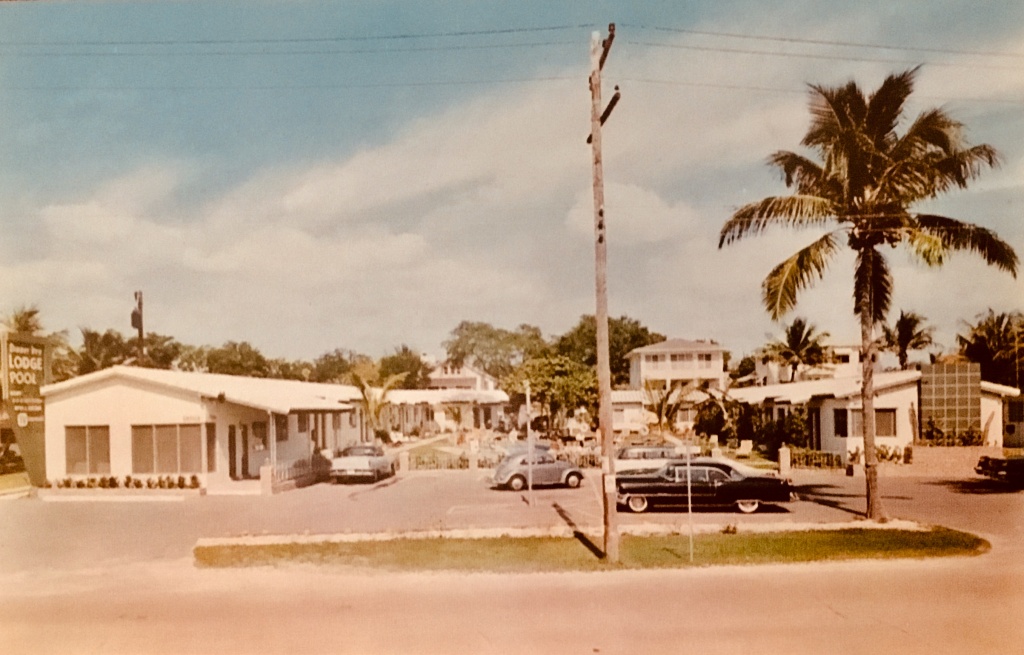
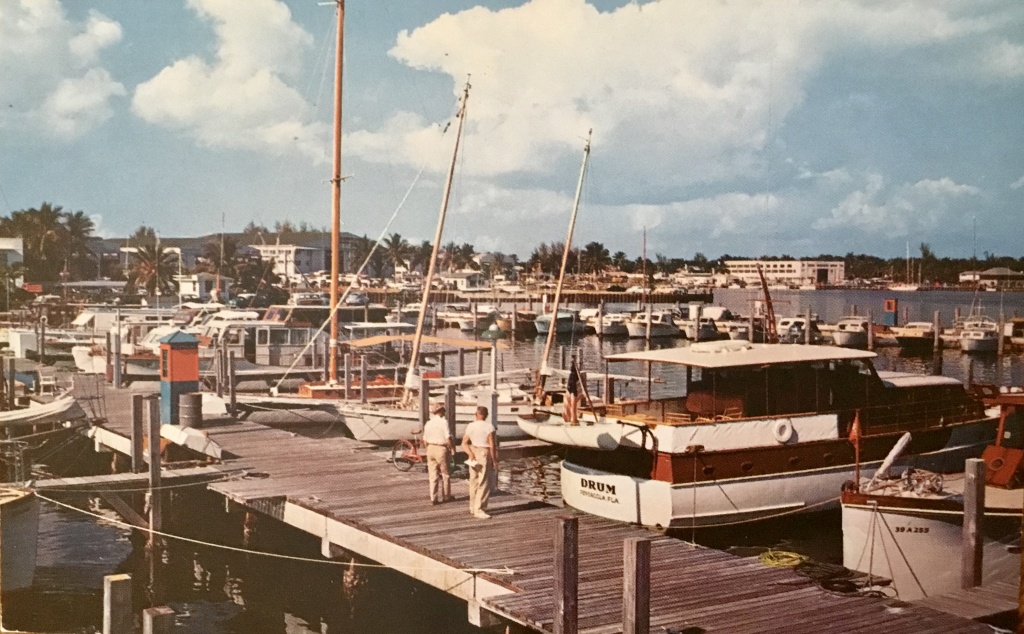
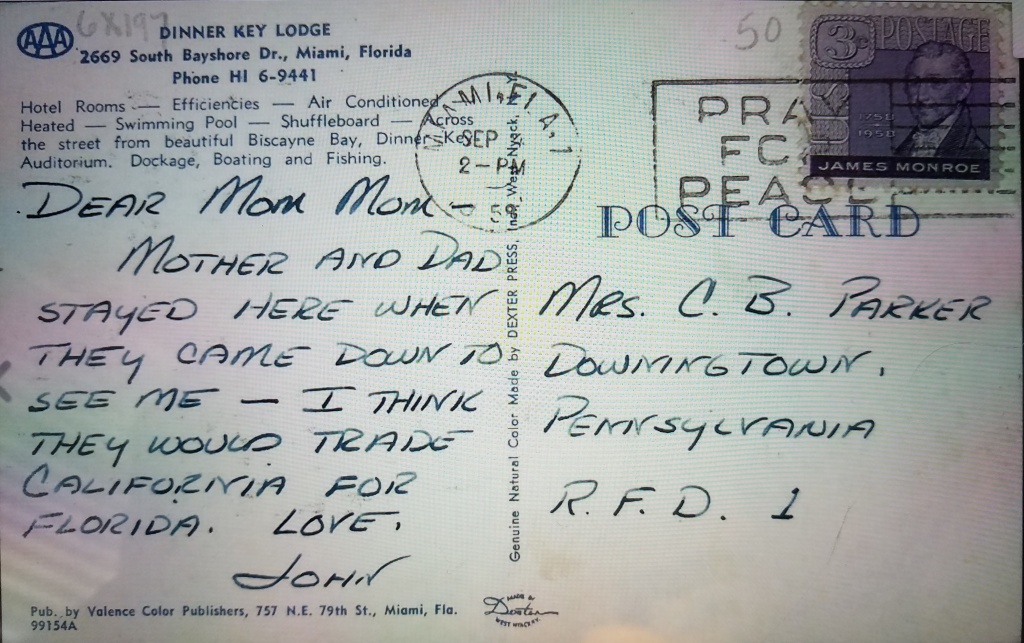
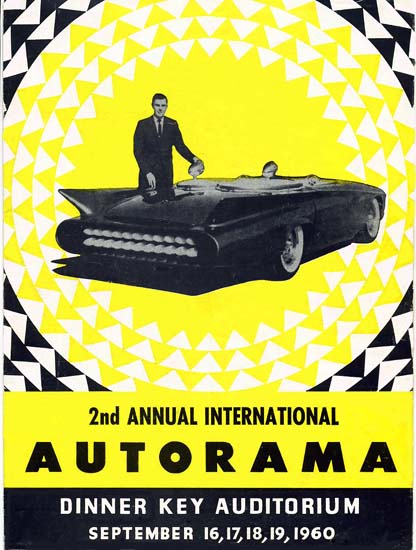

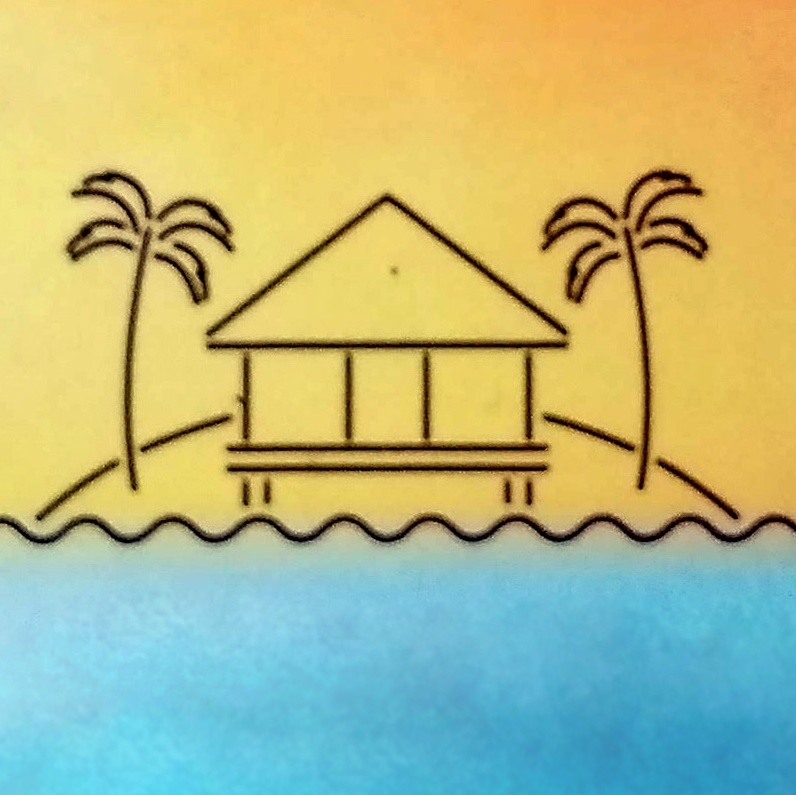
Be the first to reply